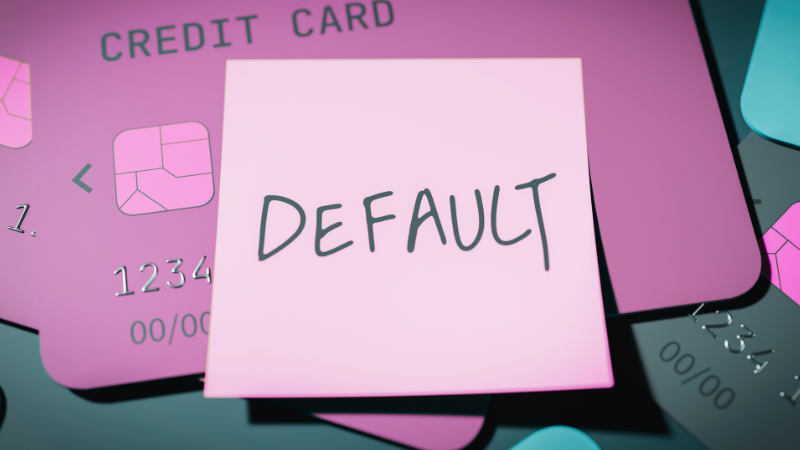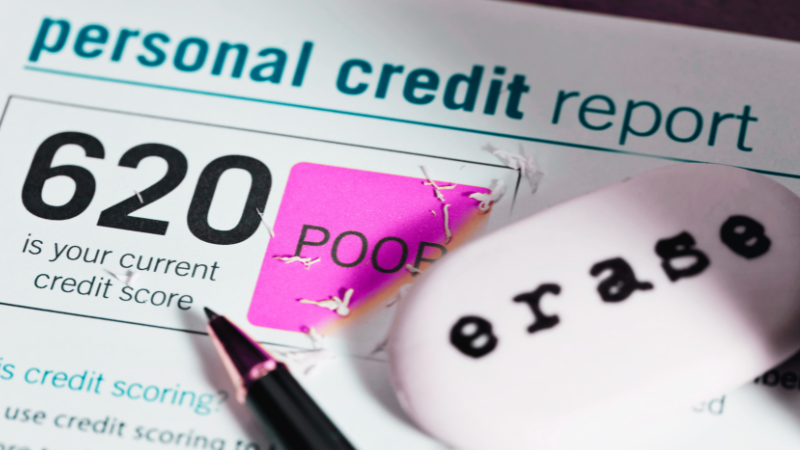A default is one of the more severe consequences of missing payments on different kinds of credit, including personal loans, credit cards, and mortgages.
The implications of a default can be long-lasting since it stays on your credit record for six years, making it trickier to borrow money.
Thankfully, a default will not stay on your credit file forever. Read on to learn more about defaults and how to get a default removed after six years.
When Will a Default Be Listed on Your Credit Report?
A default doesn’t simply appear from the blue. It’s a negative payment marker or entry placed on your credit file due to recurring missed payments, which means the lender has reported the unpaid debt. You’ll not immediately get a default as soon as you miss a payment.
Most lenders will get in touch to try and understand why you’ve failed to make repayments on time and what they can do to help you get back on track.
They’ll also attempt to get you to repay by sending payment reminders over a grace period of a few months, usually three to six months.
If the lender feels they’re not getting anywhere after the grace period or you’re not responding, they’ll issue you a default notice before officially recording the default.
A default notice is a formal letter informing you you’re behind with repayments and that your account is at risk of closure.
It gives you at least two weeks to clear the arrears and is your final chance to stop the lender from issuing a default. If you don’t pay by this time, the lender will register a default with their credit reference agency.
How Do I Get a Default Removed After 6 Years?
If six years have passed since the default was registered, it will automatically be removed from your credit report. The lender won’t be able to re-add it, even if you haven’t settled the debt.
However, some credit agencies can be slow in updating their records.
You may need to raise a credit report dispute to remove the default record if it’s over six years old and still shows on your record. Follow these steps to get your default removed:
Step 1: Download Your Credit Report
Get your credit report to see which credit reference agencies show the default. All credit agencies offer free trials on the first instance, so you can use them to check your report.
Step 2: Contact the Credit Reference Agency
Once you identify the agency showing the default, contact them to request default removal and argue your case. Tell them why it should be changed and ensure you have a right to contest the default. Keep any relevant evidence handy to support your claim.
Step 3: Get A Notice of Correction
Once you request the default removal, the agency will contact the lender to check the accuracy of the data.
The agency will put a ‘Notice of Correction’ on your file to explain that the default is being disputed. They’ll also inform you of the lender’s response, but you can contact the lender directly for feedback.
Step 4: Report Update
If the lender agrees that the data is incorrect, the agency will update your report and remove the default. The agency will also inform you of your options if the lender disagrees with your dispute.
Related bad credit guides:
- Mortgage with a bankruptcy
- Buy to let mortgage bad credit
- Can you get a mortgage with an IVA
- Mortgage with a debt management plan
Can You Remove a Default Before Six Years?
Yes. You can get a default removed from your file within six years in various scenarios. These include:
Credit Report Errors
Errors can occur on your credit file, and you have every right to remove the default if it was recorded by mistake.
For example, you may get a default for another customer with a similar name. In other instances, the lender may have failed to collect payments despite being set up.
If you’re confident the debt isn’t yours, contact the lender with proof and ask them to remove the default from your credit record.
You can also prove that you did not cancel direct debits or a continuous payment authority to the lender by getting evidence from your bank.
You’ve Only Been in Arrears for A Short Time
You can get the default removed if you were in less than three months of arrears when it was recorded on your credit file.
You can ask the lender for a statement of account containing information about your debt and repayment history. You can use it to prove that you were under three months behind on your payments when you got the default notice.
Late Default Filing
If the default was added to your credit file late, it can remain on your report even after six years.
Consequently, it will over-run and appear on your credit file longer than expected. You can contest the late default filing with the lender and have them change it to an earlier date so it can drop off sooner.
Can You Remove a Default by Repaying in Full?
No. Defaults stay on credit files for six years from the date they’re added, even after full repayments. However, paying off your debt can help you look better at potential lenders and boost your credit rating.
The debt will be marked as ‘satisfied’ on your credit file and will have a less negative impact when you need further credit. It will also help you avoid further court actions.
Recommended reading:
- Getting a mortgage with bad credit.
- Remortgages for debt consolidation.
- Mortgage application declined.
- Mortgage after repossession.
How Can You Avoid Defaulting?
Avoiding getting a default is easier than removing one. Some tips that can help you avoid defaulting include:
Contacting the Lender
Contact your lender before missing payments for three months or more to inform them about your situation if you’re struggling with repayments. They can work with you to develop a more manageable repayment plan or offer payment breaks.
Understand Your Agreement
Borrowing agreements have clauses stipulating how many payments you can miss before defaulting. Understanding this information can ensure you know when to expect a default and take steps to avoid it.
Maintain a Budget
Create a realistic budget to ensure you don’t overspend. It will help you set aside enough money for repayments and avoid going into arrears.
Call us today on 01925 906 210 or contact us to speak to one of our friendly advisors.
Final Thoughts
Defaults stay in your credit file for six years and get removed automatically once the period lapses. However, you can get a default removed within six years if it was recorded erroneously.

















